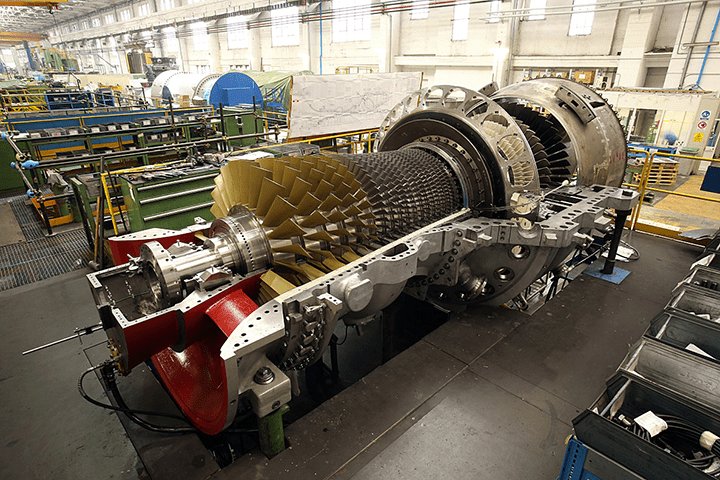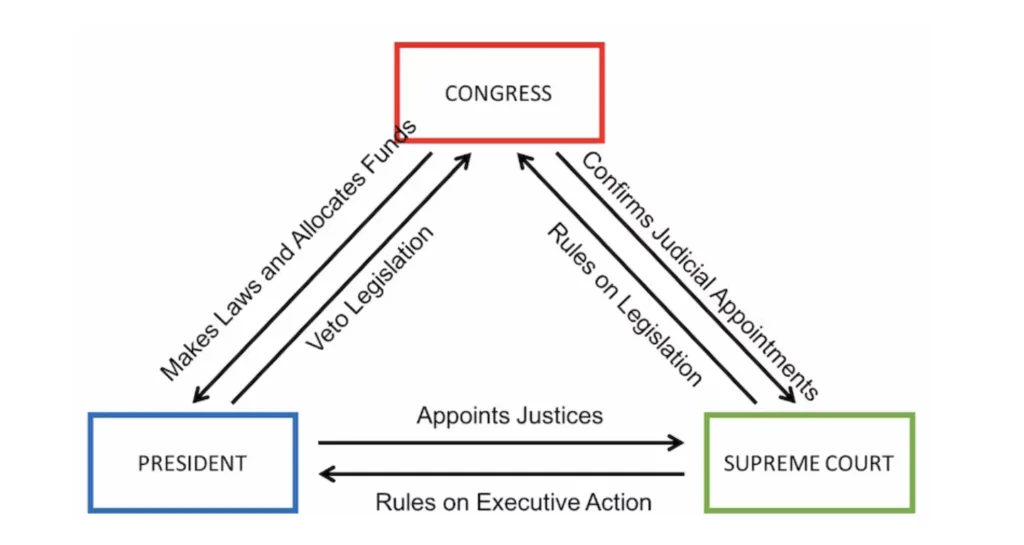Advances in Gas Turbine Technology and Combined Cycle Power Plants

Gas turbines have been a cornerstone of power generation for decades, known for their ability to produce large amounts of energy efficiently and reliably. They operate on the Brayton cycle, utilizing air compression, combustion, and turbine expansion to generate mechanical energy. This energy is then converted into electricity, making gas turbines an essential part of modern energy systems. Combined Cycle Power Plants (CCPPs) represent a transformative advancement in power generation. By integrating gas turbines with steam turbines, CCPPs harness waste heat from gas turbines to produce additional power, achieving efficiency levels above 60%, compared to 30-40% in conventional plants. This dual-cycle system offers a cleaner and more economical approach to meeting the world’s growing energy demands.
Evolution of Gas Turbine Technology
Historical Development
The first gas turbines were developed in the late 19th century, but practical applications began in the mid-20th century. Early models were primarily used in aviation before being adapted for industrial and power generation purposes. Over time, advancements in materials, aerodynamics, and thermodynamics have significantly improved their performance.
Key Innovations in Gas Turbine Design
Recent innovations include:
-
Advanced Cooling Techniques: Improved blade cooling methods extend the life of turbines operating at higher temperatures.
-
Additive Manufacturing: 3D printing allows for complex designs, reducing weight and enhancing efficiency.
-
Aerodynamic Enhancements: New blade designs minimize energy losses and optimize airflow.
Advancements in Turbine Technology: TIAC System
Turbine Inlet Air Cooling (TIAC) systems represent a significant advancement in turbine technology, addressing the critical challenge of efficiency loss due to high ambient temperatures. Gas turbines experience reduced power output and efficiency when inlet air temperatures rise, as the air becomes less dense, resulting in decreased mass flow through the turbine. TIAC systems mitigate this issue by cooling the inlet air using various methods such as evaporative cooling, mechanical chillers, or absorption chillers. By maintaining a lower and more stable inlet air temperature, these systems enhance the turbine's overall performance, enabling consistent power generation even in hot climates. Additionally, TIAC systems contribute to operational flexibility and reliability, making them an increasingly valuable solution for power plants, particularly in regions with fluctuating temperatures. This technology not only improves energy output but also reduces operational costs and supports a more sustainable and efficient energy ecosystem.
Understanding Combined Cycle Power Plants
A Combined Cycle Power Plant combines two thermodynamic cycles: the Brayton cycle (gas turbine) and the Rankine cycle (steam turbine). Waste heat from the gas turbine is captured by a heat recovery steam generator (HRSG) to produce steam, which powers a steam turbine.
-
Higher Efficiency: Achieving over 60% efficiency compared to 30-40% in traditional plants.
-
Lower Emissions: Reduced greenhouse gas emissions per unit of energy produced.
-
Flexibility: Capable of rapid start-up and load adjustment, suitable for fluctuating energy demands.
Key Components and Their Functions in Combined Cycle Power Plants
Combined Cycle Power Plants (CCPPs) integrate gas turbines and steam turbines to achieve higher efficiency and power output. The key components of a CCPP and their functions are as follows:
-
Gas Turbine: The primary component that burns natural gas or other fuels to generate high-temperature, high-pressure exhaust gases, which drive the turbine to produce mechanical energy. This energy is converted into electricity via a generator.
-
Heat Recovery Steam Generator (HRSG): Positioned downstream of the gas turbine, the HRSG captures waste heat from the exhaust gases and uses it to produce steam. This improves the plant's overall thermal efficiency by repurposing otherwise wasted energy.
-
Steam Turbine: The steam generated in the HRSG drives the steam turbine, which converts the thermal energy of the steam into mechanical energy. This mechanical energy is further converted into electricity by another generator.
-
Condenser: The steam exiting the steam turbine is condensed back into water in the condenser using cooling systems, typically involving water or air, to maintain a continuous water-steam cycle.
-
Cooling System: Essential for the condenser, it removes excess heat from the system using methods such as cooling towers, air-cooled condensers, or water-cooled systems, ensuring the efficiency of the cycle.
-
Control Systems: Automated systems monitor and regulate the operation of the plant, including temperature, pressure, and flow rates, to optimize performance and ensure safety.
Technological Advancements in Combined Cycle Power Plants
Combined Cycle Power Plants (CCPPs) have undergone significant technological advancements, enhancing their efficiency, reliability, and environmental performance. Modern gas turbines are designed to operate at higher temperatures, leveraging advanced materials and cooling techniques to improve thermal efficiency. Integration of cutting-edge Heat Recovery Steam Generators (HRSGs) with optimized designs allows for better heat capture and steam generation. Digitalization and advanced control systems have revolutionized plant operations, enabling real-time monitoring, predictive maintenance, and precise optimization of performance. Innovations such as advanced blade aerodynamics, reduced NOx emission combustors, and improved steam turbine technologies have also contributed to minimizing environmental impact while maximizing power output.
Applications and Global Adoption
Advances in gas turbine technology and combined cycle power plants have broadened their applications and driven global adoption in the energy sector. These technologies are widely employed in electricity generation due to their high efficiency, reliability, and ability to provide a stable power supply. Gas turbines, when combined with Heat Recovery Steam Generators (HRSGs) in combined cycle configurations, achieve thermal efficiencies exceeding 60%, making them a preferred choice for large-scale power generation in industrialized regions.
In addition to traditional power grids, gas turbines and combined cycle plants play a crucial role in decentralized and distributed energy systems, supporting industrial facilities, commercial centers, and urban areas. Their fast start-up capabilities make them ideal for balancing intermittent renewable energy sources such as wind and solar, ensuring grid stability.
GE Gas Turbine Control System
The GE Gas Turbine Control System is a state-of-the-art solution designed to monitor, regulate, and optimize the performance of gas turbines in industries such as power generation, oil and gas, and manufacturing. Equipped with real-time monitoring capabilities, it ensures precise control of turbine operations by adjusting parameters like fuel flow, air intake, and temperature. Its advanced protection mechanisms, including automated shutdowns and alarms, safeguard turbines against faults, ensuring reliability and system longevity.
A key feature of GE’s control system is its modular and scalable architecture, exemplified by the Mark series, including the advanced Mark VIe platform. This latest iteration integrates diagnostic tools, predictive maintenance capabilities, and secure communication protocols for enhanced efficiency and reduced downtime. Additionally, user-friendly Human-Machine Interfaces (HMI) simplify operational management, making it easier for technicians to oversee complex systems.
GE’s turbine control systems deliver significant benefits, such as improved fuel efficiency, reduced emissions, and high reliability. By enabling seamless integration with other plant systems and renewable energy sources, they support a sustainable and flexible approach to energy management. With these advanced features, GE continues to set the benchmark for innovation and performance in turbine control technology. DS3800HNMB1B, DS3800HRDB1D are examples of GE gas turbine control system components.
Conclusion
Gas turbine technology and Combined Cycle Power Plants represent significant advancements in energy efficiency and sustainability. These innovations address the dual challenge of meeting growing energy demands while minimizing environmental impact.As technology advances, CCPPs will continue to evolve, incorporating new materials, digital tools, and alternative fuels. Their adaptability and efficiency make them a cornerstone of the global energy transition.
What's Your Reaction?




















